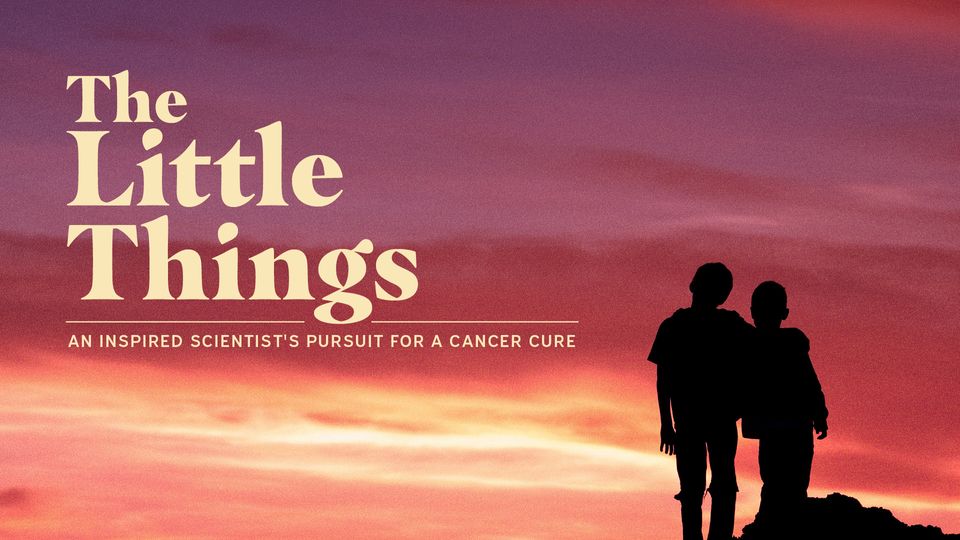The Little Things – An Inspired Scientist’s Pursuit for a Cancer Cure
A childhood tragedy pushed this scientist toward a revolutionary bone cancer treatment.

Complete the form below to unlock access to ALL audio articles.
At 12 years of age, Darrell Green’s best friend began complaining of knee pain. Both Green and his friend, Ben, were avid footballers, playing for rival local teams in Thetford, Norfolk. The boy’s parents figured their son’s knee was a run-of-the-mill sports injury. But after a few weeks, the knee pain was still there, and Ben’s injured leg began to swell.
“My friend was lucky in that the GP recognized quickly that something was not right,” recalls Dr. Green, now a researcher at the University of East Anglia. Tests confirmed a bone tumor and chemotherapy was quickly started. Ben ended up having an amputation yet, within months, the cancer was discovered to have spread to his lungs and he was told he was terminally ill. “Just before his 14th birthday, he passed away,” recalls Green.
The harrowing experience stayed with Green, who has been striving to unearth a new drug to treat bone cancer. Treatment for the most common types of bone cancer in children, osteosarcoma and Ewing sarcoma, has not changed much since the late 1970s. Improvements in surgery mean that half of patients now survive to five years compared to the previous prognosis of three years. Yet there has been little sign of new therapies on the horizon. “There have been no successful clinical trials looking at targeted drugs in bone cancer,” says Green, frustrated by this lack of progress. Tragically, bone cancer is an extremely aggressive, mostly childhood disease.

Discovery
Advances in Green’s lab this year, however, sparked hope and headlines that heralded a revolutionary new treatment. The Bone Cancer Research Trust in the UK welcomed it as what could be “the most important drug discovery in the field for more than 45 years.” Part of the advance happened when samples from patients at the Royal Orthopaedic Hospital in Birmingham revealed that a gene, RUNX2, was “switched on” in bone cancer and seemed implicated in its spread. “This isn’t the first time that RUNX2 has been implicated in bone cancer, but it is the first time that we could see how it operates and use that knowledge to develop a new medicine,” says Green.
The idea that Green now has is that, in the future, doctors could give micro-RNAs to treat kids with bone cancer. These small pieces of RNA are our body’s way of dialing up or down the volume of genes, which are themselves the recipes for making proteins in the body. Proteins should be considered akin to biological robots and can carry out varied – and often unknown – molecular tasks. micro-RNAs could be introduced as a drug to damp down or turn the volume up on genes that make proteins suspected of encouraging or discouraging cancer.
There is no quick fix for bone cancer. Around 600 people in the UK develop the disease each year. It is relatively uncommon, the research field is small and funds for investigating the disease are invariably in short supply – but Green is not discouraged. He is driven by witnessing his friend Ben’s traumatic disease. “I was personally affected by bone cancer, so I’m not going to be easily swayed by its difficulty,” he explains.
As was the case for Ben, many children who develop a bone tumor are unfortunately faced with the cancer rapidly spreading to other parts of the body, especially the lungs. This is because the cells originate from mesenchymal stem cells that are naturally inclined to wander. One in three patients diagnosed with bone cancer will already have detectable metastasis –a cancer that has spread to another part of the body – by the time they are diagnosed. “We know that another one of those three will have undetectable metastasis that ends up relapsing later,” says Green, who has studied cancer progression and metastasis. Even the one-in-three diagnosed with localized disease only have a ~60% chance of still being alive in five years.

This is yet another motivation for Green in his push to treat bone cancer. His scientific training has been steeped in investigating the outsized role of micro-RNAs, which can be just 22 nucleotide letters in length. “I’ve combined my interest in micro-RNAs with bone tumors,” says Green of his recent advance. In order to understand the relevance of micro-RNAs, one needs to consider how our cells manufacture proteins.
Embryo genes reawaken
The blueprint for the string of amino acids that make up a protein is contained within the DNA of our chromosomes. This DNA must first be transcribed, letter-for-letter, as a messenger RNA (mRNA). The mRNA molecule then exits the nucleus and goes to a miniature protein factory (a ribosome) that translates the RNA code into a string of amino acids to make the protein. Some of these proteins may be anti-tumor machines, such as the p53 tumour suppressor, while others may promote cancers, such as HER2 in breast cancer.
micro-RNAs work by matching up with letter sequences on mRNAs in a way that stops them from being made in the protein factories. This means that a tiny piece of RNA introduced into cells might shut down or dramatically curtail the production of a protein that is encouraging cancer. Indeed, the recent breakthrough in Green’s lab centers on RUNX2, a “master regulator” protein that directs and controls other proteins that are responsible for building the skeleton during embryo development, encouraging cells to move up and down the growing skeleton. “Cells moving from place to place as an embryo develops is quite normal, but is actually very dangerous once we are born,” Green explains. As a result, genes such as RUNX2 – which encodes the protein – are tuned down dramatically after birth.
“We are thinking now that bone cancers somehow reactivate this embryonic gene and that is how the cancer cells move around the body,” says Green, explaining that the result of these peregrinations can be catastrophic. He knows of one patient in particular who underwent surgery to remove a large lung tumor, but surgeons were shocked to discover over 100 individual miniature tumors that had spread from the original tumour in bone. Green suspects that the RUNX2 master regulator is facilitating the spread of bone cancer throughout the body; yet his scientific sleuthing suggested that the problem starts even before that.
The little things
First, he and his team looked at differences in low-, medium- and high-grade bone cancer to see if there were clues as to what happens at the start of a cancer. Unfortunately, bone cancer is usually so aggressive that kids have advanced-stage tumors by the time they are diagnosed. The experiments revealed that levels of a molecule called micro-RNA 140, or miR-140, shot up in high-grade tumors, which in turn stoked up RUNX2 levels.
The complexity did not stop there. This is a situation where a cell resembles highly intricate clockwork. While miR-140 and RUNX2 were elevated in high-grade tumors, there was a reduction in an RNA fragment known as tRF. Green believes that the heart of his mystery lies with such small fragments of RNA. As Sherlock Holmes said: “It has long been an axiom of mine that the little things are infinitely the most important.”
A study of RUNX2 and the tRF revealed a matching sequence. Green realized he had seen this sequence before; it is used as an anchor for another protein, YBX1, a well-known villain in driving cancers. “It became clear now that RUNX2 was just part of the story,” recalls Green, who revels in such complex biological riddles.
Further experiments in the study revealed that YBX1 physically interacts with RUNX2. “We think that the [RNA fragment] is a ‘decoy’ that stops that interaction from happening,” says Green. “In a low-grade tumor, the RNA fragment binds YBX1 via the shared sequence and stops it from binding cancer-promoting proteins such as RUNX2.” But as is the case with most cancers, the tumor cells can find a way around the body’s defenses. “The RNA fragment is gotten rid of and switched off, and in its place, YBX1 is now free to bind and support cancer-causing molecules such as RUNX2,”Green explains.
One solution to the puzzle is to introduce again the small fragment of RNA as a therapy to stop the master regulator from embryonic times being switched on. Or another approach, which attracted headlines earlier this year, is to block RUNX2 from sticking to the DNA using a hoped-for drug, named CADD522
When scientists administered this molecule three to five times a week to mice with bone cancer, the tumor’s size decreased, and metastasis-free survival increased. A group of scientists led by Professor Antonino Passaniti at the University of Maryland pursued the same strategy for breast cancer. Now, scientists in the US and the UK plan to pool their efforts and get the drug through all the necessary safety tests required before it can be tested in patients, says Green, though he is unable to name his collaborators at this stage.
“There is a possibility that one day it could be just taken as a pill with a glass of water,” says Green – though he is not counting his chickens just yet. Getting from this promising place to crossing the finish line will be an uphill slog. “If everything goes smoothly, we could be testing this compound in patients in three years. But the reality is things will not run smoothly, and it is taking time to find funding,” says Green.
As one might expect, he remains undaunted by the challenges ahead. “My drive in all of this isn’t to make money, become a millionaire and disappear on my yacht,” says Green. “I want to see a new treatment that is available to kids with bone cancer, because the treatments that my friend Ben received 21 years ago are the same treatments that are still being used today. This just isn’t good enough.”


